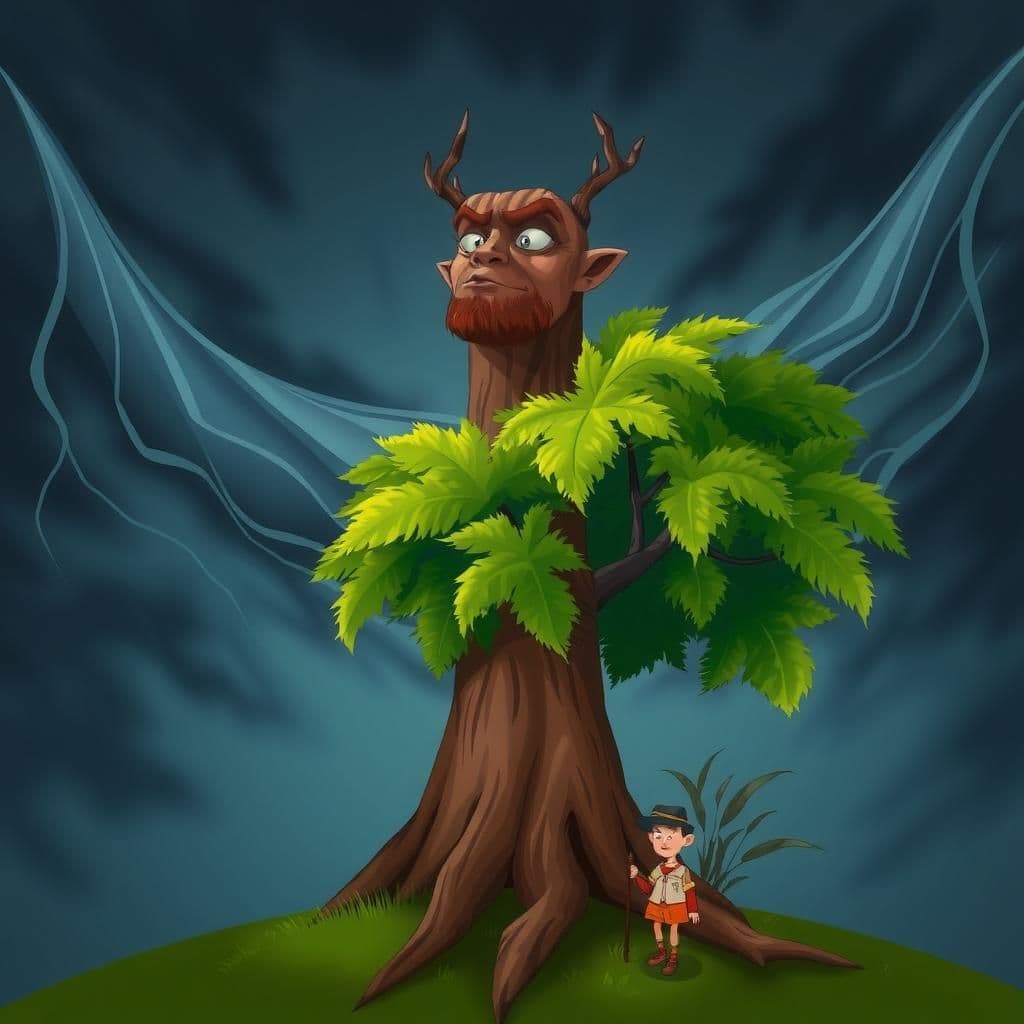The Tree and the Reed

Story Summary
In "The Tree and the Reed," a proud Tree mocks a humble Reed for its perceived lack of ambition and strength, highlighting the importance of boasting versus modesty. However, when a hurricane strikes, the Tree is uprooted and destroyed, while the adaptable Reed survives by bending with the wind, illustrating valuable lessons from moral stories about the strength found in humility and flexibility. This culturally significant tale serves as a reminder that obscurity can often bring safety, making it a perfect moral story for kids and personal growth.
Click to reveal the moral of the story
The moral of the story is that humility and adaptability can be more valuable than pride and grandeur, as they often provide safety in the face of adversity.
Historical Context
This fable echoes themes found in Aesop's Fables, a collection of ancient Greek stories attributed to Aesop, a slave and storyteller believed to have lived around the 6th century BCE. The narrative highlights the virtues of humility and adaptability over pride and rigidity, a moral prevalent in various cultures' folklore and often retold to illustrate the importance of resilience in the face of adversity.
Our Editors Opinion
In modern life, the fable highlights the importance of adaptability and humility in the face of challenges, suggesting that those who seem less grand or ambitious can often navigate difficulties more effectively. For instance, in a workplace scenario, a team member who embraces collaboration and flexibility may thrive during organizational changes, while a more dominant, self-assured leader may struggle when faced with unexpected obstacles.
You May Also Like

The Citizen and the Snakes
In "The Citizen and the Snakes," a disheartened citizen, frustrated by his failure to secure a national political convention for his city, inadvertently shatters a druggist's show-window filled with snakes. As the reptiles spill into the street, he learns a valuable lesson: even when faced with setbacks, taking action—however unexpected—can still lead to meaningful change. This unique moral story serves as a timeless reminder for students in class 7 that when we can't achieve our primary goals, we should still strive to make a difference in other ways.

A Causeway
A wealthy woman returning from abroad is warned by a policeman about the mud that could soil her shoes, but she dismisses the concern until she learns that newspaper men are lying in her path, eager for her to tread upon them. This prompts her to humorously decide to put on rubber boots, illustrating a clever twist on social expectations in concise moral stories. Ultimately, the lesson learned from this very short moral story highlights the importance of being mindful of one's actions and the perceptions of others.

The Flea and the Wrestler
In "The Flea and the Wrestler," a popular moral story, a Wrestler, bitten by a Flea, calls upon Hercules for help. Frustrated by his inability to defeat such a minor foe, he questions how he can expect assistance against larger challenges, highlighting the lessons learned from stories about facing one's fears, no matter how small. This engaging moral tale serves as a reminder that overcoming even the smallest obstacles is essential for tackling greater adversities.
Other names for this story
"Strength in Flexibility, Resilience of the Reed, The Bold and the Humble, Nature's Wisdom, The Tree's Lesson, Safe in Simplicity, The Wind's Test, Roots vs. Resilience"
Did You Know?
This fable illustrates the theme that humility and adaptability can provide greater protection against life's challenges than pride and rigidity, emphasizing that sometimes, flexibility is more valuable than grandeur.
Subscribe to Daily Stories
Get a new moral story in your inbox every day.